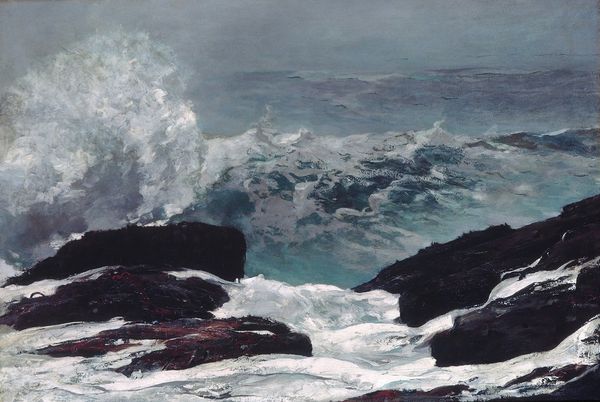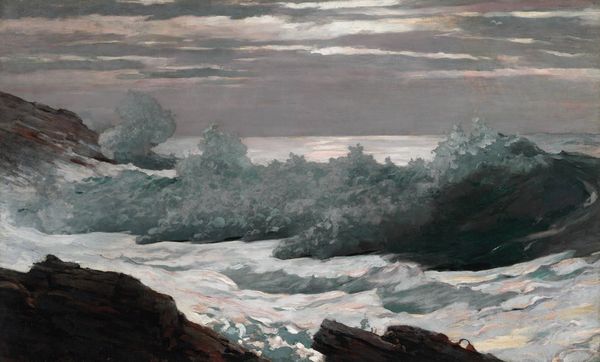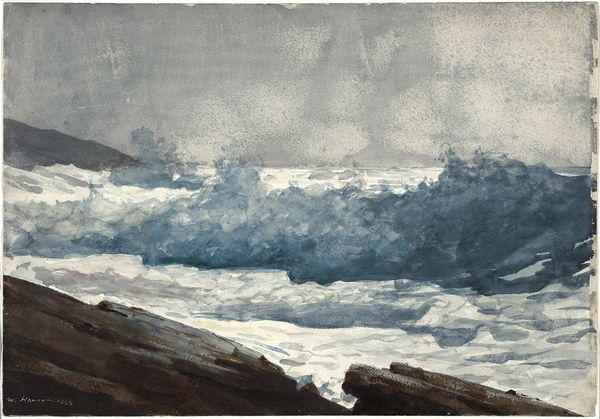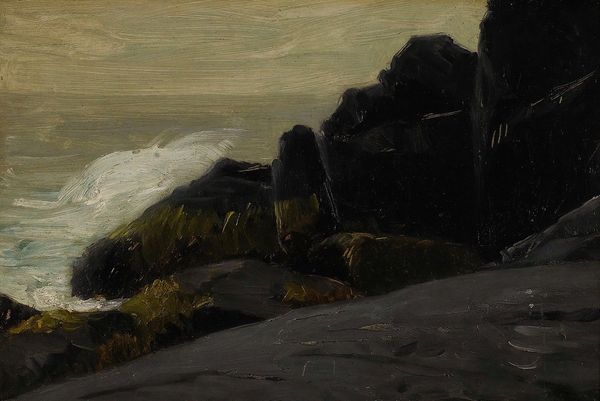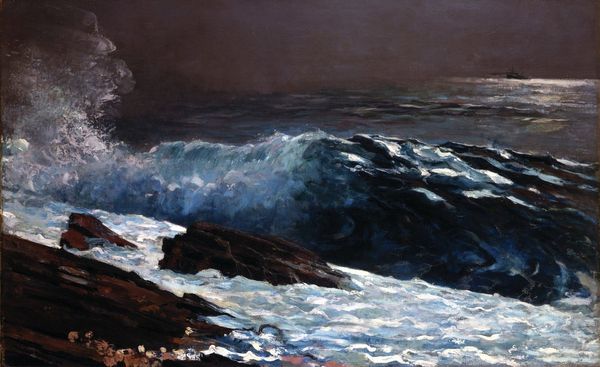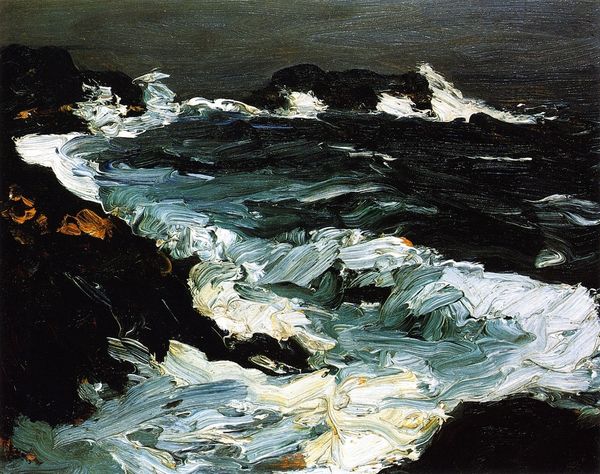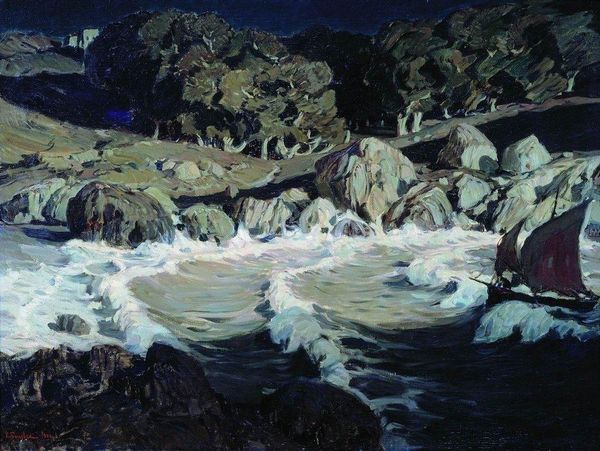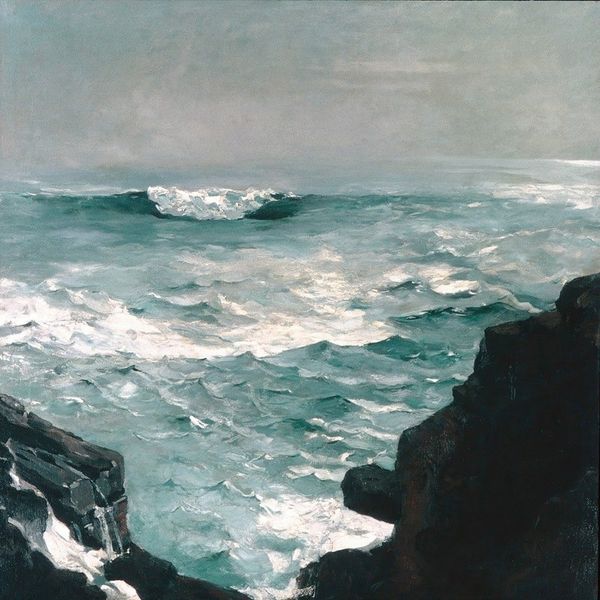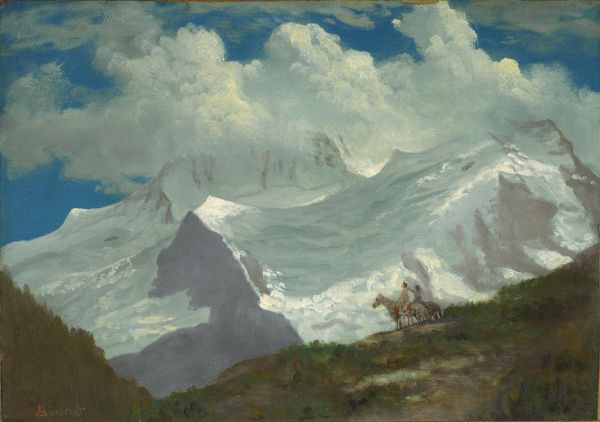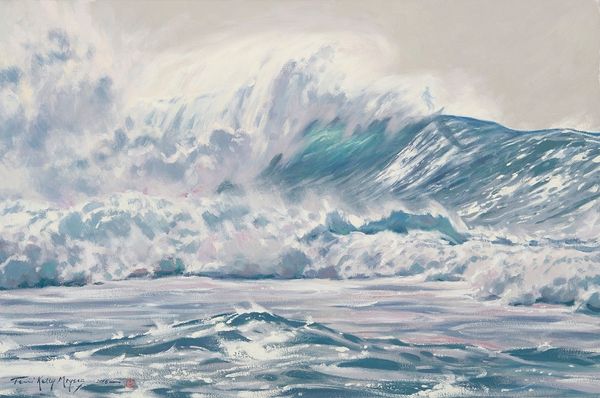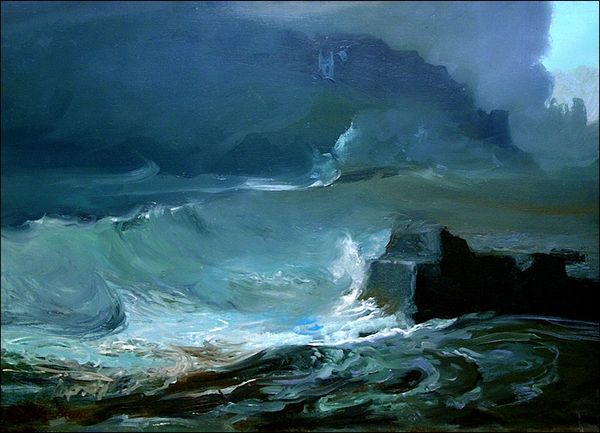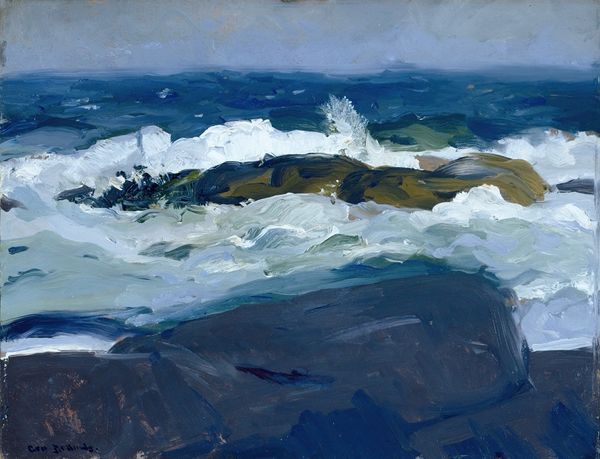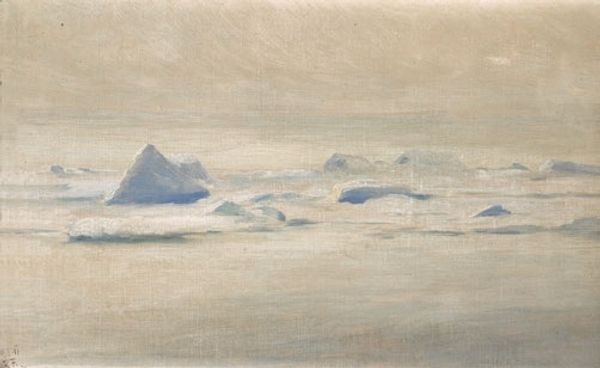
Copyright: Public domain
Curator: The piece before us is Fujishima Takeji's "Rocks and Waves (cape Shiono)," painted in 1931. Editor: It's immediately striking. The weight of those rocks against the frothy energy of the waves creates a palpable tension. And the almost monochromatic palette is beautifully subdued. Curator: Fujishima, remember, was instrumental in integrating Western art styles into the Japanese art scene, particularly Impressionism and plein-air painting, which this work embodies. The rocky coastal scenes resonated with a rising nationalism in the interwar years. Think of the way seascapes were utilized to convey the indomitable strength of a nation facing both internal conflict and an ever-shifting world order. Editor: True, but look at how the paint is applied! The broken brushstrokes describing the water, that thick impasto on the rocks... the materiality is so key. You feel the physicality of the scene, even separate from its symbolism. It has this energy which is the perfect visual representation of this turbulent clash. Curator: Consider also where this work appeared. Likely smaller galleries and art societies, accessible to a growing middle class seeking aesthetic connection to nature amidst rapid industrialization. Seascapes provided an idealized escape. Editor: That's insightful, yet it doesn't take away from the artist’s masterful application of color. See the variations of blues and greys... Notice, as well, that despite what we now consider rather conventional painting, he pushes it far enough to where that expressiveness, so typical of plein air, starts to show! Curator: Fujishima, despite his embrace of Western styles, remained conscious of Japanese aesthetic values—simplified forms, emphasis on atmosphere—reflecting an important dialogue between cultural identity and global artistic trends. Editor: Precisely! That delicate balance of Eastern sensibilities viewed through Western lenses creates this evocative scene. For me, the picture shows the relationship with an external presence. The rough rocks contrasted with the waves create a silent but powerful communication, Curator: The sociopolitical environment shaped both the artistic choices available to Fujishima, as well as the viewers' interpretations. Fascinating how a painting seemingly about nature can reflect so much more! Editor: Indeed. Even beyond history, one is captured by the dramatic interplay between light and texture, how form emerges from fluidity. It remains a striking, visually poetic work.
Comments
No comments
Be the first to comment and join the conversation on the ultimate creative platform.
